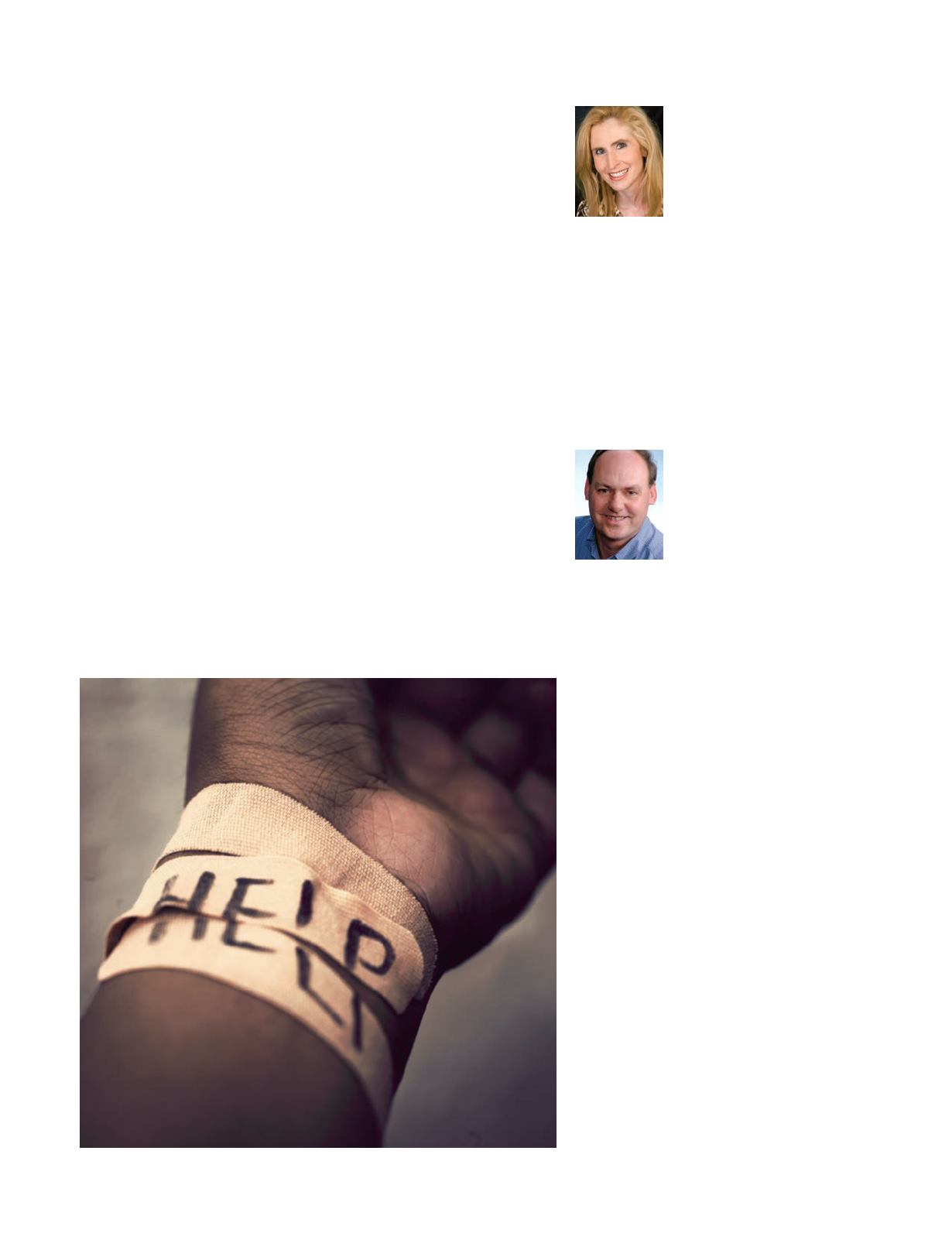
62
christian counseling today
Vol. 21 no. 2
with certain mental illnesses and personality disorders, but do not neces-
sarily indicate that suicide is imminent. However, research does suggest that
a history of self-injury can lead to acquiring the ability to complete suicide.
Repeated painful experiences, such as physical or sexual abuse, seem to
increase suicide risk as does any involvement in violence, either as a victim
or perpetrator. It is believed that the habituation to pain lowers resistance to
lethal self-injury.
9
Other types of exposure to pain and injury, either in oneself or others,
can also lower this resistance. We see increased risk for suicide in those
who have severe medical illnesses or chronic pain conditions, as well as
in people who are exposed to pain and injury in their occupations (e.g.,
medical professions, law enforcement, military, etc.). Sadly, high rates of
suicide are prevalent in law enforcement and the military, and there is also
a strong correlation with post-traumatic stress disorder in these professions.
The availability to firearms for military and law enforcement personnel
gives them ready access to, and familiarity with, the most lethal form of
completed suicide. All of these factors put our law enforcement and military
workers, as well as our veterans, at the highest risk. Studies show the suicide
rate among recent combat veterans to be 50% higher than civilians, with one
study revealing veterans taking their lives at a rate of 22 each day.
10
Training
Finally, while awareness is the first step, as caregivers we must also be lifelong
learners and seek ongoing training and supervision so we can offer the most
competent and effective interventions when those we treat and minister
to are suicidal. The question is not “if ” you will come face-to-face with
someone who is suicidal, but when. When you do, will you be ready?
✠
Jennifer Cisney Ellers,
M.A.,
is a professional counselor, life
coach, crisis response trainer, author
and speaker. She conducts training,
counseling and coaching in the field
of grief, crisis and trauma through the
Institute for Compassionate Care. Jennifer is an approved
instructor for the International Critical Incident Stress
Foundation, teaching several CISM courses. In addition, she
serves as Director of the Grief, Crisis and Disaster Network
of the American Association of Christian Counselors and
provides divorce coaching, training and speaking through
Emerge Victorious, a ministry for women rebuilding their lives
after divorce. Jennifer is the coauthor of
The First 48 Hours:
Spiritual Caregivers as First Responders
with her husband,
Dr. Kevin Ellers.
Kevin L. Ellers, D.Min.,
is the Territorial Disaster Services
Coordinator for The Salvation Army in
the U.S.A. Central Territory. He is also
president and founder of the Institute for
Compassionate Care, which is dedicated
to education, training and direct care. Kevin is a chaplain
with the Illinois Fraternal Order of Police, serves as faculty for
the International Critical Incident Stress Foundation, and is
an adjunct professor at Olivet Nazarene University. He has
extensive training and experience in crisis response, disasters,
chaplaincy, pastoral ministries, marriage and family therapy,
and social services. As an author and speaker, Kevin teaches
broadly on these related topics. He is coauthor of
The First
48 Hours: Spiritual Caregivers as First Responders
,
CISM:
Grief Following Trauma
, and
Spiritual and Psychological
First Aid
, and author of
CISM: Emotional and Spiritual
Care in Disasters
.
Endnotes
1
American Foundation for Suicide Prevention. www.
afsp.org/understanding-sucide/facts-and-figures.2
Ibid.
3
Centers for Disease Control and Prevention Data &
Statistics Fatal Injury Report for 2013.
4
American Foundation for Suicide Prevention. www.
afsp.org/understanding-sucide/facts-and-figures.5
www.treatmentadvocacycenter.org, 2015.
6
Joiner, T.E. (2007).
Why people die by suicide
.
Cambridge, MA. Harvard University Press.
7
Ibid.
8
Ibid.
9
Ibid.
10
VA Office of Public Affairs. www.va.gov/opa/docs/
suicide-data-report-2012-final.pdf.









